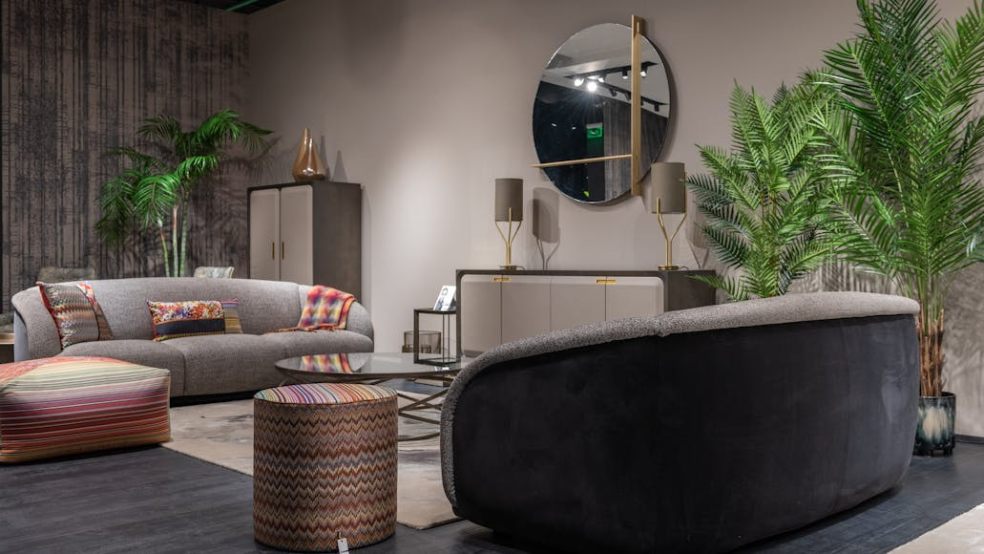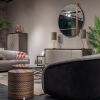
Modern Furniture Trends in the UK and Ireland
In recent years, the furniture industry in the UK and Ireland has seen a dramatic shift towards contemporary design, sustainability, and functionality. Modern furniture is no longer just about aesthetics; it's about creating spaces that reflect individuality, embrace technology, and accommodate evolving lifestyles. This read explores the top trends shaping modern furniture choices in British and Irish homes today, from materials and styles to sustainability and smart home integration.
Minimalism with Personality
Minimalism has long been a dominant trend in modern interiors, especially across urban homes in cities like London, Dublin, Manchester, and Belfast. Clean lines, neutral tones, and uncluttered layouts continue to be popular. However, the 2020s have brought a twist to this design principle: minimalism with personality.
Homeowners are now incorporating bold accent pieces into minimalist spaces, such as sculptural chairs, brightly coloured cushions, or abstract wall art. The goal is to maintain a clutter-free environment while injecting charm and individuality.
Popular minimalist furniture choices include:
-Low-profile sofas in muted tones
-Floating shelves with hidden brackets
-Sleek, handleless storage units
-Open-plan dining tables made of natural wood or glass
Sustainable and Eco-Friendly Choices
According to Furniture Next Day Ireland, sustainability is a driving force behind modern furniture trends in the UK and Ireland. With a growing awareness of climate change and environmental degradation, more consumers are demanding eco-friendly options. Furniture brands are responding by using responsibly sourced materials, recycled fabrics, and water-based finishes.
Key elements of sustainable furniture include:
-FSC-certified wood
-Bamboo and rattan
-Recycled metals and plastics
-Organic or plant-based upholstery fabrics
Local production is also on the rise, reducing carbon footprints associated with shipping. Irish and British artisans are producing bespoke, high-quality pieces that combine tradition with modern aesthetics, supporting both sustainability and local economies.
Multi-Functional Furniture for Compact Living
With high property prices and smaller living spaces in cities like London, Dublin, and Edinburgh, there’s a growing demand for furniture that maximises utility. Multi-functional furniture has become a staple in modern homes, combining convenience with clever design.
Examples include:
-Sofa beds and extendable dining tables
-Ottomans with hidden storage
-Fold-out desks and Murphy beds
-Modular shelving systems
These pieces allow residents to make the most of every square foot without compromising on style. In open-plan flats, multi-functional furniture helps define zones, making spaces more livable and adaptable.
Curved Lines and Organic Shapes
Modern furniture in the UK and Ireland is embracing curves. The dominance of boxy, angular furniture is waning in favour of more organic, flowing shapes that promote comfort and elegance.
Rounded coffee tables, oval mirrors, and curvy armchairs are making waves in interior design. These shapes soften a room’s aesthetic and create a more inviting and relaxing atmosphere. Sofas with plush, rounded edges are especially popular, often upholstered in tactile materials like boucle, velvet, or soft wool.
This trend is heavily influenced by mid-century modern design and Scandinavian minimalism, both of which celebrate form as much as function.
Natural Materials and Textures
There's a growing preference for furniture that brings natural elements indoors. Stone, wood, linen, jute, and clay are all being used in contemporary furniture design. These materials not only enhance aesthetic appeal but also support the trend of biophilic design — creating spaces that connect people to nature.
Notable textures include:
-Raw, unfinished wood surfaces
-Linen and cotton upholstery
-Textured ceramics and concrete finishes
This emphasis on nature provides visual warmth and helps create a calming environment, especially in busy households or home offices.
Statement Pieces and Bold Colours
While neutral palettes dominate minimalist interiors, bold colours and statement furniture pieces are increasingly being used to punctuate a room. In modern British and Irish homes, one vibrant chair or a coloured console table can transform an otherwise understated space.
Popular colours in 2025 include emerald green, navy blue, mustard yellow, and terracotta. These hues are appearing in velvet armchairs, sideboards, and even modern bed frames.
Marble, brass, and gold accents also continue to be stylish additions, especially in dining or lounge areas where homeowners want to entertain or impress.
Vintage Revival and Retro Inspiration
Retro-inspired furniture is enjoying a resurgence in both the UK and Ireland. Mid-century modern and Art Deco influences are being reimagined for today’s interiors. Furniture with tapered legs, geometric patterns, and walnut finishes are making a comeback.
This vintage revival is driven by a desire for nostalgic comfort, combined with the unique character these styles offer. Moreover, many homeowners are shopping at antique markets or reclaiming second-hand furniture to blend the old with the new.
Technology-Integrated Furniture
As smart home technology becomes more mainstream, furniture is evolving to meet digital needs. From wireless charging pads embedded in nightstands to desks with built-in cable management and lighting, technology is increasingly part of modern furniture design.
Some popular tech-friendly furniture trends include:
-Smart coffee tables with mini-fridges and Bluetooth speakers
-Adjustable standing desks
-TV units with cable concealment systems
-Motion sensor lighting built into wardrobes or cabinets
These pieces are particularly popular with younger homeowners and remote workers who value connectivity and convenience.
Customisation and Modular Designs
Customisation is a growing priority for consumers. Rather than buying one-size-fits-all pieces, many people now want furniture that suits their specific tastes and needs. Modular sofas, beds with interchangeable headboards, and made-to-measure wardrobes are gaining traction.
In the UK and Ireland, brands are offering online configurators that let customers select fabrics, colours, dimensions, and add-ons. This flexibility ensures that furniture integrates seamlessly into the home, both functionally and visually.
Local Craftsmanship and Artisan-Made Furniture
There’s a rising appreciation for craftsmanship across the British Isles. Handmade furniture crafted by local artisans is being recognised for its quality, sustainability, and authenticity. Consumers are increasingly seeking out small furniture studios in cities like Galway, Cork, Glasgow, and Bristol.
These pieces often blend traditional woodworking techniques with contemporary design, offering something unique compared to mass-produced alternatives. Supporting local makers also ensures ethical production and a reduced environmental footprint.
Final Thoughts
Modern furniture trends in the UK and Ireland are evolving rapidly, shaped by changing lifestyles, environmental concerns, and advances in design. Whether it's through sustainable materials, tech integration, or a renewed focus on comfort and personality, today’s furniture reflects a desire for both function and expression.

















